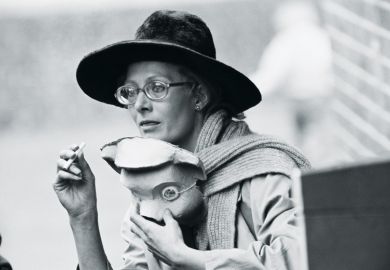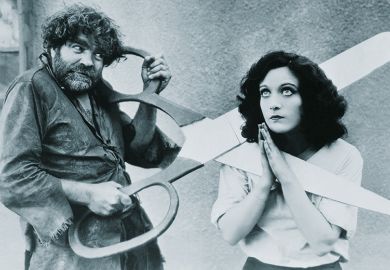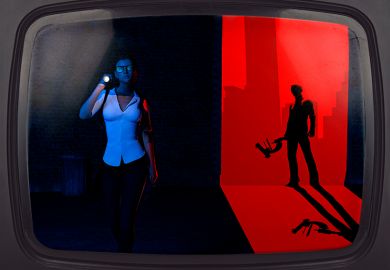Gender equality – and the unconscious biases that challenge it – is now a mainstream concern in academic life. Codes of conduct are drawn up in efforts to support dignity at work and at study. Efforts are made to free senior academic appointments from gender bias. Many believe there is a long way yet to go, but there is also a real danger of failing to see what has been achieved.
While bias-spotting is now high on the agenda among both students and academic staff, noting and celebrating bias-free zones is not. This negative emphasis may flag a useful intolerance of bias, but it also has many downsides.
One aim of higher education is to arm students with understanding of people around them, to equip them with skills in collaboration. This involves appreciation of others’ input. Another aim is to increase fairness of judgement, and this includes the appreciation of others’ fair judgements. A third aim is to outline features of the world that students are likely to experience after they graduate. Over-sensitive bias spotting may defeat each of these aims.
Recently, I attended a session designed to showcase successful women to both students and academics. In conversation with a prominent professor, an entrepreneur was invited to present an overview of her career, and the special challenges she confronted. In the course of one discussion, the host academic said: “Well, of course, women are always judged by what they look like, good or bad.”
There was general assent among the audience, expressed in a ripple of amusement and convivial exchanges of scoffs and nods. But I felt a deep unease because I was sure that on some level everyone in the room knew that this simply isn’t true.
In that audience, most of the women, most of the time, are not assessed on “how they look” – assuming that “how they look” refers to some kind of physical appeal. They have genuine professional relationships with male and female colleagues, who judge them on the value of their research, their teaching and their ability to obtain research funds.
Moreover, any sign that a woman was being judged on her appearance would stand out and raise opprobrium not only in the victim but also in many of her colleagues. After all, when a distinguished woman is criticised in print or mocked on Twitter for failing some beauty standard, she attracts applause when she gives a robust rebuff. Focusing on misogynistic bias and ignoring the loud resonance of resistance is a missed opportunity to assure students and staff that support for their efforts to resist being judged on appearance is widely available.
Unconscious bias against women in academia is very real. For example, it has been shown that both women and men rate a CV higher when they believe it belongs to a man than they do when they are told it belongs to a woman. Gender bias sometimes exerts its awful power even when it goes against our self-image, our judgement and our values. But to tame it, we need to locate it and, ideally, to understand its scope.
One obstacle to doing that successfully is, ironically, another unconscious bias. Confirmation bias, as it is known, focuses on examples confirming a generalisation that is in accord, however inexactly, with our beliefs – and wipes out memories of all counter-examples. I know from experience that any dissent can be met with hostility. The response is likely to be: “How can you say this generalisation is untrue when I can think of many cases in which it is true?”
It is certainly true that “sometimes a woman is judged by how she looks”. For this reason, the similar but stronger statement that women are always judged by how they look feels true, such that rebuttals are seen as anti-feminist, or, indeed, “misogynist”. Intelligence is used not to challenge but to shore up that belief.
Attractiveness undoubtedly has a “halo effect”, such that attractive people tend to be judged more favourably. But it is not as straightforward as many people assume. For instance, a study involving students at the University of St Andrews, published in 2016, found that while – unsurprisingly – there is no link between attractiveness and intelligence, people are actually pretty good at assessing intelligence from appearance. And while men’s assessments of women’s intelligence (from photographs) correlate with their assessments of their attractiveness, that could just as easily be because they find intelligence attractive as that they falsely infer intelligence from facial beauty.
Making further inroads against bias will be much easier when we are able to read – and to teach – nuance. In a world in which polarisation on contentious issues is becoming ever more extreme, it is incumbent on universities, above all institutions, to see where bias is not problematic as well as where it is, and to respond in measured and open-minded ways to the problems that afflict both themselves and wider society.
Terri Apter is a psychologist and fellow emerita at Newnham College, Cambridge and author of Passing Judgment.
POSTSCRIPT:
Print headline: If academics do not acknowledge subtleties of nuance, who will?
Register to continue
Why register?
- Registration is free and only takes a moment
- Once registered, you can read 3 articles a month
- Sign up for our newsletter
Subscribe
Or subscribe for unlimited access to:
- Unlimited access to news, views, insights & reviews
- Digital editions
- Digital access to THE’s university and college rankings analysis
Already registered or a current subscriber?








